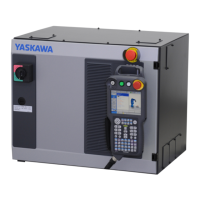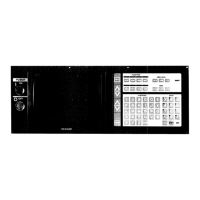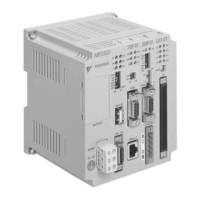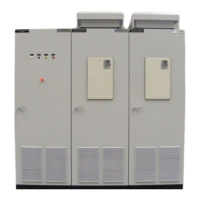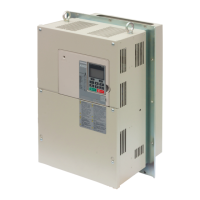7 Debugging
7.3 Debugging via Telnet Communication
7-4
HW1484528
HW1484528
7.3 Debugging via Telnet Communication
The RUN-TIME debugger for the YRC1000micro system software, can be
connected with a debug PC via Telnet to provide the user with various
types of debugging function. Thus, printf() and puts() functions can be
inserted in the application source code, and the desired memory content
or message can be shown on the Telnet terminal.
With this procedure, debug only the tasks with normal priority. For
debugging the tasks with high priority (the tasks started with the task
priority: MP_PRI_IO_CLK_TAKE, MP_PRI_IP_CLK_TAKE, or
MP_TIME_CRITICAL, or the task “mpUsrRoot”), refer to chapter 7.4
“Debugging by User Variables of YRC1000micro” .
7.3.1 Operation Procedure
1. Set the IP address, etc.
The Ethernet communication settings corresponding to your
environment (such as the IP address setting at the YRC1000micro
side) must be performed in the maintenance mode.
The procedure is as follows:
(1) Turn OFF the YRC1000micro then back ON while pressing the
[MAIN MENU] to start the maintenance mode.
(2) Select {SYSTEM} under the main menu, then select {SECURITY}.
Then, change the security mode to the MANAGEMENT MODE.
If the Telnet function is enabled, an alarm such as “0500:
SEGMENT PROC NOT READY” may occur when the
YRC1000micro is started.
This is because the Telnet task of the YRC1000micro side is
performed with a high priority, so processing of other sys-
tem tasks are not performed normally.
If such an alarm occurs, restart the YRC1000micro.
Also, after completing debugging, make sure to set the Tel-
net function to INVALID (S2C1119 = 0).
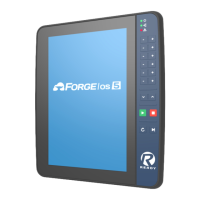
